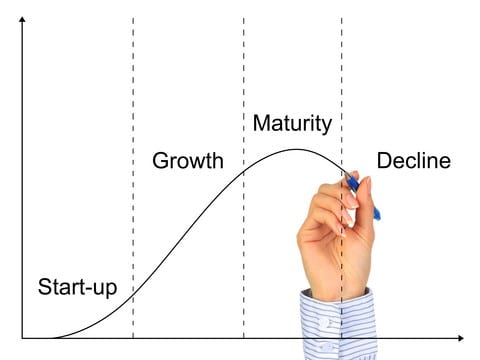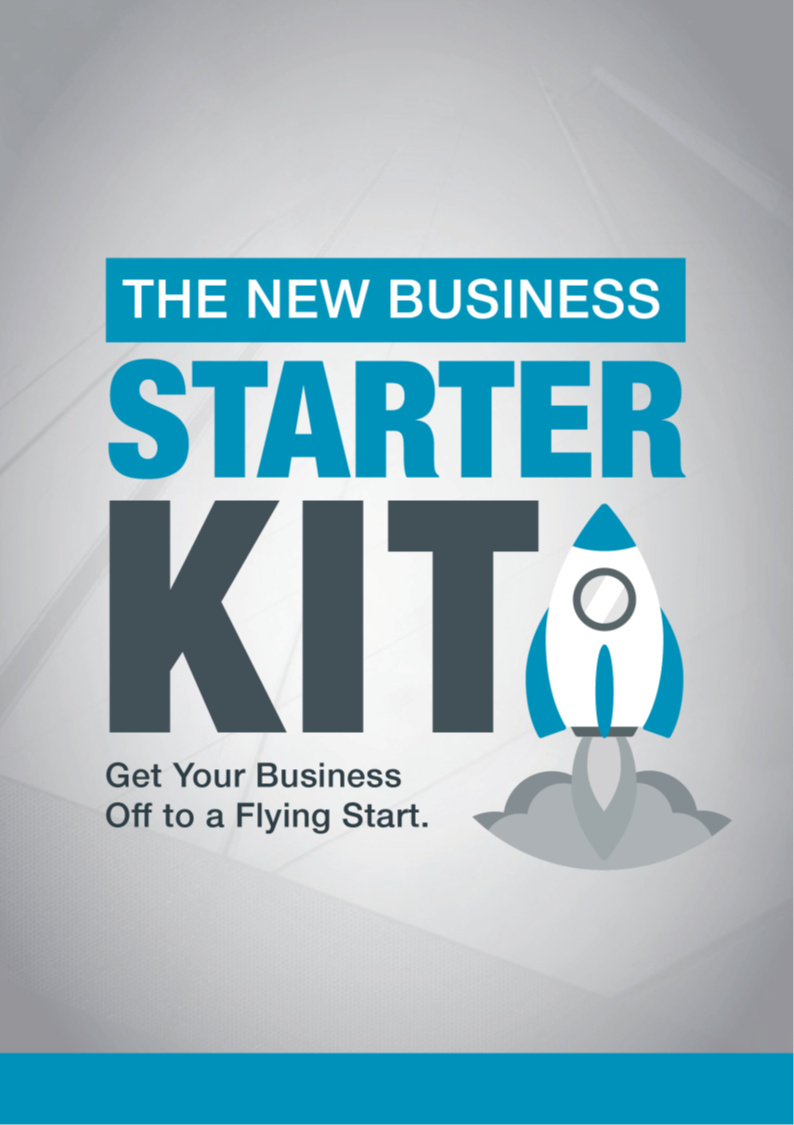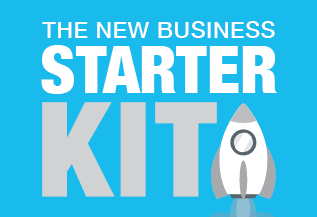The Key Ingredients for Business Success (Part 1)
 At
some stage in life, most people entertain the idea of starting a business. The attraction of being your own boss offering more freedom
and potentially a higher income is almost irresistible. While there’s no magic potion or secret formula that guarantees business success,
highly successful businesses have some common characteristics that we will explore across a series of articles.
At
some stage in life, most people entertain the idea of starting a business. The attraction of being your own boss offering more freedom
and potentially a higher income is almost irresistible. While there’s no magic potion or secret formula that guarantees business success,
highly successful businesses have some common characteristics that we will explore across a series of articles.
Are You Suited to Entrepreneurship?
Before we explore the common denominators of successful businesses, let’s look at whether you have the right DNA to run a business. People go into business for a multitude of reasons, but some people almost fall into business by accident. While entrepreneurship sounds attractive, it isn’t for everyone and the traits of successful business owners often include being disciplined, organised, passionate, skilled and creative. If you want to go into business you need to be prepared to make sacrifices including working longer hours plus self-employment comes with added pressure, stress and risk. The survival rate in the first five years isn’t encouraging with around 50% of Australian small businesses disappearing in that timeframe.
The reasons for the relatively low survival rate are many and varied but it comes as no surprise to find that the big business killer is a lack of finance. Of course, this could be a symptom of bad financial management, a lack of demand, low quality products, poor marketing, the wrong location or bad business management. Having the wrong team, supplier or pricing model can suffocate your business and burnout could be the signal to get out.
 While
there’s no simple formula that guarantees business success, we can learn from the mistakes of others. It can be a fine line between success
and failure and starting or buying a business necessitates research, risk, passion and courage. To succeed you need to make the right
opening moves so planning and timing are important. The COVID-19 pandemic highlighted the importance of timing, and all markets go through
the four phases of the life cycle – start-up, growth, maturity and finally decline. Where is the market for your business right now?
Ideally, you want to join the market in the growth phase rather than the decline stage so you need to do your homework because an industry
or product can move to the next stage very quickly. For example, is there new technology on the horizon that could disrupt the industry and
potentially make your idea or product obsolete or redundant?
While
there’s no simple formula that guarantees business success, we can learn from the mistakes of others. It can be a fine line between success
and failure and starting or buying a business necessitates research, risk, passion and courage. To succeed you need to make the right
opening moves so planning and timing are important. The COVID-19 pandemic highlighted the importance of timing, and all markets go through
the four phases of the life cycle – start-up, growth, maturity and finally decline. Where is the market for your business right now?
Ideally, you want to join the market in the growth phase rather than the decline stage so you need to do your homework because an industry
or product can move to the next stage very quickly. For example, is there new technology on the horizon that could disrupt the industry and
potentially make your idea or product obsolete or redundant?
 A
lot of budding entrepreneurs get swept up in the excitement of starting their business and in the rush, they bypass some important steps
and check points. Some businesses are born out of simple ideas but quickly enter a world of legal complexity with industry and government
regulations. Failing to tie up the legal loose legal ends can prove fatal, and the truth is, enthusiasm, money, hard work, talent and a
great idea are usually ‘must haves’ but they don’t guarantee success. Being a good technician is not enough anymore, you need to be able to
manage the business compliance and management aspects, particularly if you plan to grow and employ staff.
A
lot of budding entrepreneurs get swept up in the excitement of starting their business and in the rush, they bypass some important steps
and check points. Some businesses are born out of simple ideas but quickly enter a world of legal complexity with industry and government
regulations. Failing to tie up the legal loose legal ends can prove fatal, and the truth is, enthusiasm, money, hard work, talent and a
great idea are usually ‘must haves’ but they don’t guarantee success. Being a good technician is not enough anymore, you need to be able to
manage the business compliance and management aspects, particularly if you plan to grow and employ staff.
While the business start-up phase can be a whirlwind of ideas it can also be a management minefield. The excitement of entrepreneurship can blur your decision making and start-ups need to make key decisions about the business or tax structure, accounting software and insurances. There are business registrations to complete, and you need to consider the best way to finance plant and equipment. If you’re looking to employ staff from the outset there are human resource issues to consider including employment agreements, payroll software, workers compensation insurance plus superannuation guarantee obligations. For an entrepreneur fuelled by excitement and adrenaline, this endless list of ‘to do’ items can be frustrating but rushing the process can mean you miss one key issue that can trip you up with catastrophic financial consequences.
 Over
the years we have mentored hundreds of entrepreneurs through the start-up phase of their business and along the way we have developed a
range of tools, templates and checklists to help you get your business off to a flying start. We have consolidated these resources into our
32-page publication, ‘The New Business Starter Kit’ that you can download from our website. You’ll find that endless list of ‘to do’ items
has been summarised into an 82-point checklist.
Over
the years we have mentored hundreds of entrepreneurs through the start-up phase of their business and along the way we have developed a
range of tools, templates and checklists to help you get your business off to a flying start. We have consolidated these resources into our
32-page publication, ‘The New Business Starter Kit’ that you can download from our website. You’ll find that endless list of ‘to do’ items
has been summarised into an 82-point checklist.
What Are the Characteristics of Successful Businesses?
Every business is different but in this series of articles we will explore the common traits of highly successful businesses.
1. Planning
.png) In
business, failing to plan is planning to fail. Building a business is a bit like building a house, you need to have a plan and build on
solid foundations. Your business plan should include a marketing plan and a cash flow forecast for the first 12-months of operation. With
no trading history you’ll need to make lots of assumptions to piece this together but remember, nobody understands your business idea
better than you.
In
business, failing to plan is planning to fail. Building a business is a bit like building a house, you need to have a plan and build on
solid foundations. Your business plan should include a marketing plan and a cash flow forecast for the first 12-months of operation. With
no trading history you’ll need to make lots of assumptions to piece this together but remember, nobody understands your business idea
better than you.
The start-up phase is hectic and it’s easy to get caught up in in issues like product development or burying your head in researching your customer’s habits and your competitor’s marketing. Too often we find start-ups overestimate demand for their products and underestimate their costs. That often translates to a cash flow shortage in the early stages which can prove disastrous. Your budget and financial plan are key documents particularly if you need to secure finance from a bank or third party.
There’s a lot at stake and hitting the start button without financial proof that your business is viable could mean you burn a lot of cash and possibly burn yourself out in the process. Your business plan must prove to investors and financiers that your business concept works and make sure you seek professional advice to verify your figures. If the numbers don’t stack up, you need to make a big decision. Look to cut costs, not corners and if you can’t prove the viability of the business you will struggle to raise finance which is a big red flag. Revisit your business plan and see if you can make strategic changes to increase the revenue or reduce costs:
- Put your five largest expenses under the microscope to see if they can be pruned.
- Review your prices - will the market tolerate a 10% increase in price and what impact will that that have on your bottom line?
- Can you source cheaper inputs from suppliers without compromising the quality of your products?
- Could you operate from smaller or cheaper premises in the short term?
- Do you need all the staff you have budgeted on in the first 6 to 12 months?
- What can you do to get a better result from your online marketing activities?
- Should you lease rather than buy plant and equipment?
- Could you offer additional related services to increase your revenue?
- Are there new markets you could try without overextending your resources or finances?
- Is there a different niche target market you have overlooked?
2. Point of Difference
 If
your business doesn’t have a clear point of difference compared to your competitors, it’s unlikely you’ll win a big slice of the market. In
many industry sectors there is a ‘sea of sameness’ so you need to find something thing that clearly distinguishes your business from the
pack. Starting and competing in a congested market without a serious point of difference is going to prove an uphill battle.
If
your business doesn’t have a clear point of difference compared to your competitors, it’s unlikely you’ll win a big slice of the market. In
many industry sectors there is a ‘sea of sameness’ so you need to find something thing that clearly distinguishes your business from the
pack. Starting and competing in a congested market without a serious point of difference is going to prove an uphill battle.
Entering a mature market means you are up against established businesses who have a head start on you. They probably already have a large customer database, proven products and systems, a website and a social media footprint. If your business doesn’t offer something new or innovative then you must have another distinguishing feature. The less innovative the business idea, the more compelling your point of difference needs to be.
If you run a pizza shop, hairdressing salon or coffee shop you’ve probably got lots of local competitors. It might be very difficult to differentiate your product or service but that’s where you need to think outside the box and your marketing might need to be your differentiator. Your point of difference doesn’t need to be unique, but it does need to be of value to your customers, clients or patients. Solve a problem, promise faster, cheaper or better quality products or services. Bundle a unique combination of products or services together and make them practical, impressive and convincing. Finally, don’t forget to heavily promote your point(s) of difference!
As a guide, your differentiators must tick these three boxes:
- Truthful – you can’t just make it up and you must deliver on your promise.
- Provable – You must be able to prove it’s real to a sceptical potential customer
- Relevant – it has to mean something to a potential customer.
Of course, markets evolve, and you might catch your competitors off guard if they fail to adapt to changes in consumer demand or technology. Look at the history of former market leaders like Kodak and Borders. They failed to adapt to changes in consumer behaviour and paid a high price. As a new player in the market, this could be your point of difference and edge by having the latest technology or systems that deliver a better, faster or simpler customer experience.
 3.
Know Your Numbers
3.
Know Your Numbers
Successful business owners know their numbers. This includes:
- The cost of goods they sell.
- The gross profit margin on every product they sell.
- How many sales they need to make each day or week to break even.
- The key performance indicators (KPIs) in the business.
- The key profit drivers in the business.
- Weekly/Monthly Payroll and fixed costs.
Probably the most important number is your price. While you might have the newest, most exciting product or service in your industry, can you bring it to market at a price consumers will accept and still make a sustainable profit? No matter how special you think the goods or services are, there’s always an upper limit as to what people are prepared to pay. Remember, your competitors have alternative products and probably at different price points.
Your competitor’s prices or the industry benchmarks can give you some idea on the price range you should target but be very careful about discounting. That strategy might get you a toehold in the market, but low margins can bring a business to its knees. It might drive sales in the short term, but it can create an issue with future price expectations and also create a perception that the quality of your goods is below your competitors. This can also reflect poorly on your brand, particularly when you’re hanging your hat on the quality of your products. While discounting has its place, there needs to be a purpose behind the price drop. It could be to clear old or obsolete stock; you might need to generate some cash flow, or it could be a ‘loss leader’ to win a new customer.
If you need help with setting your prices talk to us today. We will make sure your price calculations include all costs and still allow you to make a sustainable profit. We can do some financial modelling based on different price points and input costs to help you prepare forecasts for various scenarios including best case, worst case and the mid-point. You can also access free templates for a business plan, cash flow budget and profit & loss statement from the resources section of our website.
Businesses don’t succeed by accident and yours won’t either. Running a business is a work in progress and you have to constantly review what is working, what isn’t working and what needs working on. The numbers tell a story, and they can alert you to emerging issues. For example, if your weekly or monthly sales fall below break-even point you need to read the warning signs. If sales for this week or month compared to the same period last year have dropped dramatically it should trigger some response. Industry benchmarks can help you get an understanding of the performance of your competitors and where you might need to improve operations. For a start-up business these benchmarks can be invaluable because you have no financial track record and there is a lot of estimates and guess work when preparing your budget.
SUMMARY
 Entrepreneurship
isn’t for everyone. No amount of blood, sweat or tears can guarantee the financial success of your business and businesses fail for a
number of reasons. Successful businesses have a plan, develop a clear point of difference and know their key numbers. Timing is important
and sometimes luck can be the difference between surviving and thriving. Of course, when it comes to luck, the harder you work, the luckier
you get.
Entrepreneurship
isn’t for everyone. No amount of blood, sweat or tears can guarantee the financial success of your business and businesses fail for a
number of reasons. Successful businesses have a plan, develop a clear point of difference and know their key numbers. Timing is important
and sometimes luck can be the difference between surviving and thriving. Of course, when it comes to luck, the harder you work, the luckier
you get.
Super successful businesses have great teams and their management also make good business decisions. As you’ll read in other articles in this series, they also have a lead generation website and are marketing savvy. They systemise their business processes and do their homework on their competitors.
If you’re looking to build and grow a successful business, we invite you to contact us today.
This article forms part of our Business Accelerator Magazine. Download the latest edition HERE or browse other articles from this edition below:
- Are COVID-19 Grants & Subsidies Taxable?
- Rent Relief for Victorian (& NSW) Commercial Tenants
- ATO’s Data-Matching Programme Continues to Focus on Lifestyle Asset Purchases
- Return to Top
In case you missed it - our blog on Business Support Packages for Victorian Businesses has also been updated.
Disclaimer: This newsletter contains general information only. No responsibility can be accepted for errors, omissions or possible misleading statements. No responsibility can be accepted for any action taken as a result of any information contained in these articles. It is not designed to be a substitute for professional advice and does not take into account your personal circumstances.




